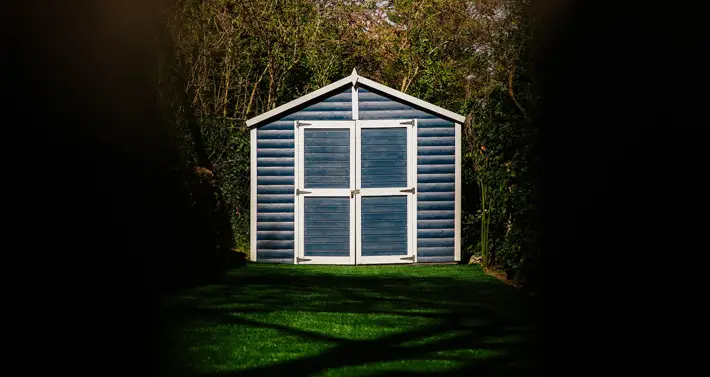Everything You Need to Know About Shed Waterproofing and How it Can Help Protect Shed

Shed waterproofing is an essential part of maintaining a shed and protecting it from water damage. It is a process of applying a waterproof coating to the shed’s exterior in order to protect it from rain and other sources of moisture. This coating helps to keep the shed dry, preventing rot, rust, and other types of damage that can occur due to water exposure. Shed waterproofing is important for preserving the structural integrity of your shed and ensuring its longevity.
How to Choose the Right Waterproofing Material for Your Shed
Choosing the right waterproofing material for your shed is essential to ensure that it remains safe from water damage. Waterproofing materials can be divided into two categories: paints and sealants. Paints are generally used to protect the exterior of the shed while sealants are used to provide a waterproof barrier on the roof or other vulnerable areas. In addition, waterproof membranes can also be used to provide extra protection against water.
5 Steps to Effective Shed Waterproofing
Sheds are a great addition to any home, but they need to be waterproofed in order to last for years. If you don’t properly waterproof your shed, it will be vulnerable to water damage and rot. Waterproofing your shed is not difficult and can be done in five simple steps. By following these steps, you can ensure that your shed is protected from the elements and will last for years. In this article, we’ll discuss the different steps of shed waterproofing including using sealants, water-resistant coatings and rainwater diverters. So let’s get started!
● Step 1: Sealants – Once you decide to waterproof your shed, you’ll want to use a sealant. A sealant is a type of coating that is water resistant like an interior or exterior paint that helps repel moisture and water. There are two types of sealants, one for exterior and one for interior walls.
○ For the interior walls, use stucco-based wallpaper or paint with a high silicone content.
○ For the exterior walls, use acrylic-based paint or stucco-based wallpaper.
Sealants tend to be more expensive than other waterproofing methods but they can keep your shed from getting mouldy and mildewed.
● Step 2: Roof – You should coat your shed’s roof with a sealant or paint to help reduce leaks and prevent rain from getting in. You can use a mix of sealants for the best results, but if you’re painting, it’s best to use exterior paint for the best durability. Lastly, we do not recommend using a sealant on siding because it could lead to peeling paint or cracking of wood trim as well as damaging flashing. Caution: Improperly using a sealant could also cause rapid deterioration of the wood. that it’s applied to.
● Step 3: Windows and Doors – We recommend using exterior paint on the windows, doors, and trim of your shed. This type of paint should have a matte finish that will help hide imperfections and provide better protection against moisture. If you’re using a different sealant, we recommend using a clear coat over the top to protect your project from fading. Caution: Using a different sealant could also cause rapid deterioration of the wood that it’s applied to.
● Step 4: Floor – You should seal your shed’s floor with a sealant or paint to prevent moisture from getting in. You can use a mix of sealants for the best results, but if you’re painting, it’s best to use exterior paint for the best durability.
● Step 5: Baseboards – If you’re painting the baseboards around your shed, we recommend using exterior paint with an eggshell finish.
What Are the Benefits of Shed Waterproofing?
Shed waterproofing is an important step in protecting your shed and extending its lifespan. It helps to prevent leakages from the roof, walls, and other areas of the structure. Constructing your shed with this material can offer extra protection from rain, snow, ice, and other environmental elements. This will make your outdoor structure much stronger and more resistant. Waterproofing also helps to extend the life of your shed materials by providing a barrier that prevents water damage. Not only does this improve the overall aesthetic of your shed but it can also save you money in the long run by preventing costly repairs or replacements.
Common Mistakes to Avoid When Applying a Waterproof Coating To Your Shed
Applying a waterproof coating to your shed can be a daunting task, but with the right application technique and product choice, it can be done correctly. Unfortunately, many homeowners make common mistakes when applying a waterproof coating to their shed. Below are some of the common mistakes to avoid when applying a waterproofing coating to a shed:
1. A basic mistake is not waiting for the product to dry before walking on it again. In order to properly waterproof your shed, you should wait at least 24 hours for the finish to dry. During this time, avoid using any tool on the surface of your shed that could harm the coating or cause air bubbles. Using a garden hose with a spray nozzle can help speed up drying time and coat larger areas of your shed in one sitting.
2. Another common mistake is applying too much paint or stain during prep work and then having excess that cannot be applied later when you’re actually working on painting. It is always better to apply less and then add more as you go along.
3. The last mistake many homeowners make is not waiting long enough for the coats to dry before adding a coat. The paint will build up on top of each other and result in spots that are too thick, leading to bubbling and peeling paint away from your shed.
Conclusion:
Waterproofing your shed is essential for preserving its structural integrity and keeping it in good condition for years to come. It also helps to improve the lifespan of any items stored in the shed, as well as prevent water damage from occurring. By waterproofing your shed, you can ensure that it will remain safe and secure for years to come.










